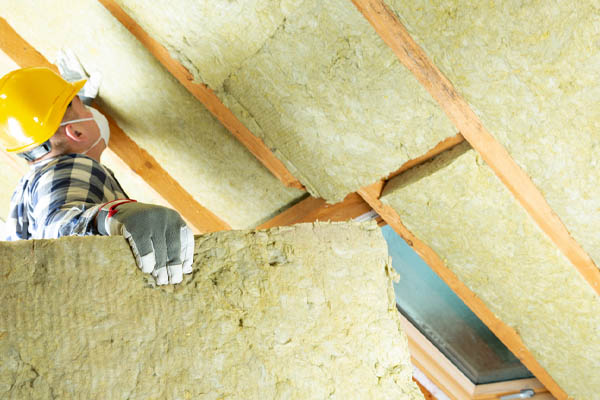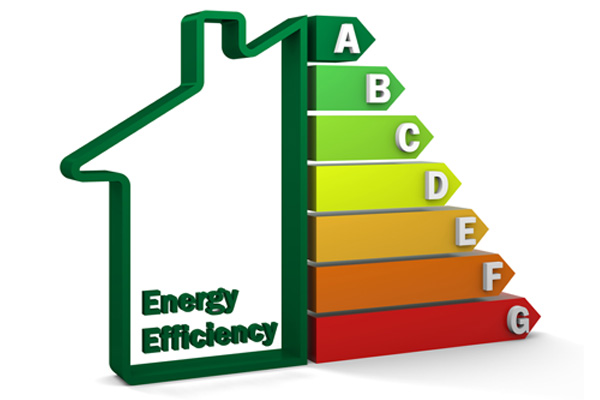What Is A Thermal Envelope For Colorado Homes?

Your home is supposed to keep you comfortable during the summer and winter. If it feels cold and drafty indoors, then something isn’t right. Don’t be too quick to point fingers at the heating system. Maybe your boiler or furnace is working well, but the house itself has issues that are causing your discomfort. You need to fix these first, or else the misery will continue indefinitely. Read on to this article from Ascend Construction to understand the concept of a “thermal envelope” and how it affects indoor comfort.
The Basics of a Thermal Envelope
Contents
- The Basics of a Thermal Envelope
- What are the Functions of a Thermal Envelope In Fort Collins?
- Signs Your Thermal Envelope Needs an Upgrade
- Reasons Behind Thermal Envelope Failure In CO Buildings
- Benefits of a Well-Insulated Thermal Envelope
- Frequently Asked Questions About Thermal Envelopes
- How Can I Tell If My Home Has a Poor Thermal Envelope?
- What Are the Best Materials for Improving a Thermal Envelope?
- How Does a Thermal Envelope Impact HVAC System Performance?
- Can a Thermal Envelope Be Improved Without Major Renovations?
- Does a Strong Thermal Envelope Reduce Noise Pollution?
- What Is the Lifespan of a Thermal Envelope?
- Conclusion
- Contact Ascend Construction for Expert Insulation Services in Fort Collins, Colorado
The thermal envelope is the home’s outer shell. It’s comprised of exterior walls, the roof, and the floor. Also included are fixtures and other materials on these surfaces, such as doors, windows, insulation, caulking, weatherstripping, and air retarders. The building envelope shields the interiors from moisture and extreme temperatures. If the shell is poorly designed and constructed, then drafts and water may get inside. Heated or conditioned air may also escape, forcing the HVAC system to work twice as hard as it should. Degraded thermal envelopes in old homes can perform better after an upgrade.
What are the Functions of a Thermal Envelope In Fort Collins?
Air Control
A good thermal envelope must restrain airflow for continuous comfort. This will ensure condensation prevention, efficient energy consumption, and healthy indoor air quality. A house where you feel drafts all the time has bad air control. You will need to seal holes and cracks to make these go away.
Expert Insulation Services for Maximum Comfort: Improve your home’s energy efficiency with Ascend Construction’s professional insulation and air sealing solutions. Call today!
Moisture Control
Moisture is everywhere around us: snow, rain, and water vapor. If it gets into the home, then it can weaken the structure and cause property damage. Excessive moisture can also encourage the growth of mold and mildew, which are bad for health. The thermal envelope is responsible for keeping moisture under control so that it doesn’t overwhelm the house.
Thermal Control
The shell of the home should keep the indoor temperature steady no matter what’s happening outside throughout the year. It must prevent heat from moving in or out, so the HVAC system can reach the thermostat setting more easily. Insufficient control calls for better insulation.
Signs Your Thermal Envelope Needs an Upgrade
If your home has persistent drafts, uneven indoor temperatures, or high energy bills, your thermal envelope may be compromised. Poor insulation and air leaks allow conditioned air to escape, forcing your HVAC system to work harder and increasing energy costs. Condensation on windows, excessive indoor humidity, and mold growth can also indicate moisture control issues within the envelope.
Additionally, if outdoor noise easily penetrates your home or your HVAC system cycles frequently, it may be time for an upgrade. A professional energy audit can pinpoint problem areas, and improvements like better insulation, air sealing, and energy-efficient windows can enhance comfort, efficiency, and indoor air quality.
Upgrade Your Home’s Insulation for Lasting Savings: Reduce energy waste and enhance indoor comfort with Ascend Construction’s expert insulation services. Contact us now!
Reasons Behind Thermal Envelope Failure In CO Buildings
Bad House Design
Most architects know about proper thermal envelope design today, but that wasn’t the case before. Older homes may have been designed more for aesthetics than for year-round comfort. Architects may have also chosen incompatible materials that create problems over time. Expert evaluation will reveal all the underlying issues so you can address them.
Poor Craftsmanship
Even if the design is impeccable, the execution may be less than ideal. The contractor could have taken shortcuts to save money and pad profits. The workers may lack the skills or the time to build the house properly. Poor craftsmanship can lead to thermal envelope failure.
Seal Air Leaks and Cut Energy Costs: Ascend Construction provides top-quality air sealing and insulation upgrades to keep your home comfortable year-round. Get started today!
Thermal Bridges
Thermal bridges connect the indoor and outdoor environments. These need to be minimized in the design of the house. They occur when structural support touches doors, windows, and the like. Gaps between them are prone to air movement in both directions.
Defective Materials

Builders should choose the best available materials as much as possible for excellent results. However, sometimes the chosen materials don’t quite live up to the expectations. It could be due to manufacturing defects, careless handling, improper storage, or faulty installation.
Natural Damage
You may have the most polished thermal envelope at the start, but that will not last for long. Nature will slowly inflict wear and tear on the shell until damage sets in. This usually takes years, but natural disasters can hasten the decline. Schedule routine inspections to fix problems immediately, so they don’t get worse.
Professional Insulation Removal and Installation: Enhance your home’s thermal performance with Ascend Construction’s trusted insulation solutions. Schedule a consultation now!
Benefits of a Well-Insulated Thermal Envelope
If you want to improve your thermal envelope, then consider the professional installation of high-performance insulation material such as spray foam. It should provide you with the following benefits:
Stable Temperature
Added insulation will reduce outside influences on the home. The indoor temperature will remain stable throughout the day and throughout the seasons. You won’t have to change your thermostat settings often to counter wild swings around the house. Once the HVAC system has achieved the ideal temperature, it will stay there for longer.
Energy Efficiency

Thanks to the new insulation, the furnace and the air conditioner won’t have to work as much as before. That means they can achieve your temperature settings using less energy. It’s great for eco-conscious consumers who want to reduce their environmental impact.
Substantial Savings
It’s not just the planet that benefits from improved insulation and increased energy efficiency. Homeowners also get great perks such as lower energy expenditures thanks to reduced consumption. Over time, the savings can add up to a substantial sum. This offsets the cost of the insulation.
Better Indoor Air Quality
Spray foam can create a tight seal around the surfaces on which it sticks. Air and water won’t be able to move across the barrier. That means dust, pollen, smoke, and pathogens from the outside won’t be able to get inside the home through the cracks like they used to. Indoor air will be easier to breathe without these pollutants. Allergies are less likely to flare up.
Energy Audits and Insulation Solutions You Can Trust: Identify and fix energy inefficiencies with Ascend Construction’s expert evaluations and upgrades. Call today!
Frequently Asked Questions About Thermal Envelopes

How Can I Tell If My Home Has a Poor Thermal Envelope?
A poor thermal envelope often reveals itself through persistent drafts, uneven indoor temperatures, and high energy bills. You may also notice excessive humidity, mold growth, or condensation on windows and walls, which indicates that moisture control is lacking.
If your HVAC system runs constantly but struggles to maintain the set temperature, your home may leak conditioned air. A professional energy audit, which includes thermal imaging and blower door tests, can pinpoint problem areas and help determine the best solutions.
What Are the Best Materials for Improving a Thermal Envelope?
The best materials for improving a thermal envelope depend on your climate and specific home needs. Spray foam insulation provides an airtight seal and excellent thermal resistance, while rigid foam board is ideal for exterior applications. Blown-in cellulose or fiberglass can improve attic and wall insulation without major renovations.
High-performance windows with low-E coatings and argon gas fillings minimize heat transfer. Additionally, sealing gaps with weatherstripping, caulk, and vapor barriers prevents unwanted air infiltration, enhancing the overall efficiency of your home.
How Does a Thermal Envelope Impact HVAC System Performance?
A strong thermal envelope significantly improves HVAC efficiency by reducing the amount of heating or cooling required to maintain a comfortable indoor environment. When insulation and air sealing are inadequate, heat escapes in the winter and enters in the summer, forcing the HVAC system to work overtime.
This increases energy consumption, shortens equipment lifespan, and leads to higher repair costs. By upgrading your home’s thermal envelope, your HVAC system can run more efficiently, resulting in consistent indoor temperatures, lower energy bills, and reduced wear and tear on your heating and cooling equipment.
Whole-House Comfort Starts with Better Insulation: Let Ascend Construction improve your home’s efficiency with high-quality insulation and air sealing services. Contact us now!
Can a Thermal Envelope Be Improved Without Major Renovations?
Yes, you can enhance your home’s thermal envelope without undergoing major renovations. Simple and cost-effective upgrades include sealing gaps and cracks with caulk or expanding foam, installing weatherstripping around doors and windows, and adding thermal curtains or reflective window films.
If attic insulation is insufficient, blown-in cellulose or fiberglass can be installed with minimal disruption. For further improvements, upgrading to energy-efficient windows and doors or applying an exterior insulation layer can make a noticeable difference in energy performance and indoor comfort.
Does a Strong Thermal Envelope Reduce Noise Pollution?
Yes, a well-insulated and properly sealed thermal envelope not only improves energy efficiency but also acts as a sound barrier. High-density insulation materials like spray foam, mineral wool, or thick fiberglass batts absorb sound waves, reducing noise from traffic, neighbors, or other external sources.
Multi-pane windows with insulated frames and properly sealed doors further minimize sound transmission. This makes a significant difference in urban areas, near busy roads, or in homes with large windows facing noisy environments.
What Is the Lifespan of a Thermal Envelope?
The durability of a thermal envelope depends on factors such as material quality, installation techniques, and exposure to environmental elements. Properly installed insulation can last 50 years or more, but some components, such as caulking, weatherstripping, and vapor barriers, may need replacement every 5 to 10 years due to wear and tear.
Regular home inspections can help detect degradation from moisture, pests, or structural shifting, allowing you to address minor issues before they lead to bigger energy efficiency losses. By maintaining and upgrading insulation and air-sealing components as needed, you can extend the lifespan of your home’s thermal envelope and maximize its performance.
Conclusion
A strong thermal envelope is essential for maintaining year-round comfort, energy efficiency, and indoor air quality. If drafts, fluctuating temperatures, or rising energy bills are disrupting your home, addressing insulation gaps, air leaks, and inefficient windows can make a significant difference.
Investing in upgrades not only reduces HVAC strain and lowers utility costs but also protects your home from moisture damage and enhances overall durability. Professional assessments can identify problem areas, ensuring targeted improvements that maximize performance. Strengthening your home’s thermal envelope is a smart, long-term investment in comfort, sustainability, and savings.
Contact Ascend Construction for Expert Insulation Services in Fort Collins, Colorado
For high-quality insulation and air sealing, choosing the right contractor makes all the difference. Ascend Construction is a trusted leader, providing expert insulation removal and installation, air sealing, energy audits, whole-house fan installations, and energy-saving solutions tailored to your needs.
With a commitment to superior craftsmanship and long-term efficiency, Ascend Construction ensures top-tier results that enhance comfort and lower energy costs. Contact us today to get started on improving your home’s performance and comfort!

Contact Ascend Construction for a free consultation today. We can provide you with practical solutions to address the problem areas in your Fort Collins home. All of our services are affordable, and our work is guaranteed. Click here to contact us, or click the button below to give Ascend Construction a call. We offer free, no-obligation, in-home consultations.
Ascend Construction
301 S Howes St #1241
Fort Collins, CO, 80521
Related Articles: